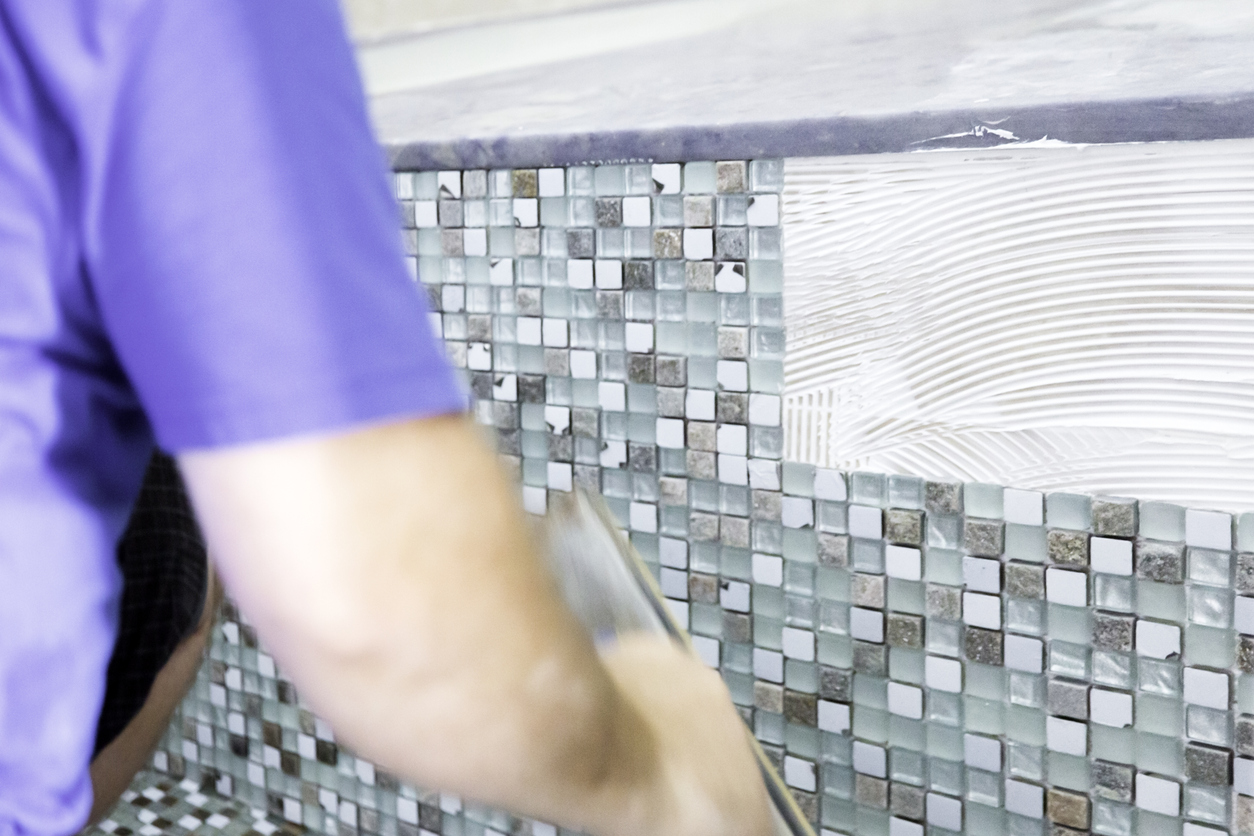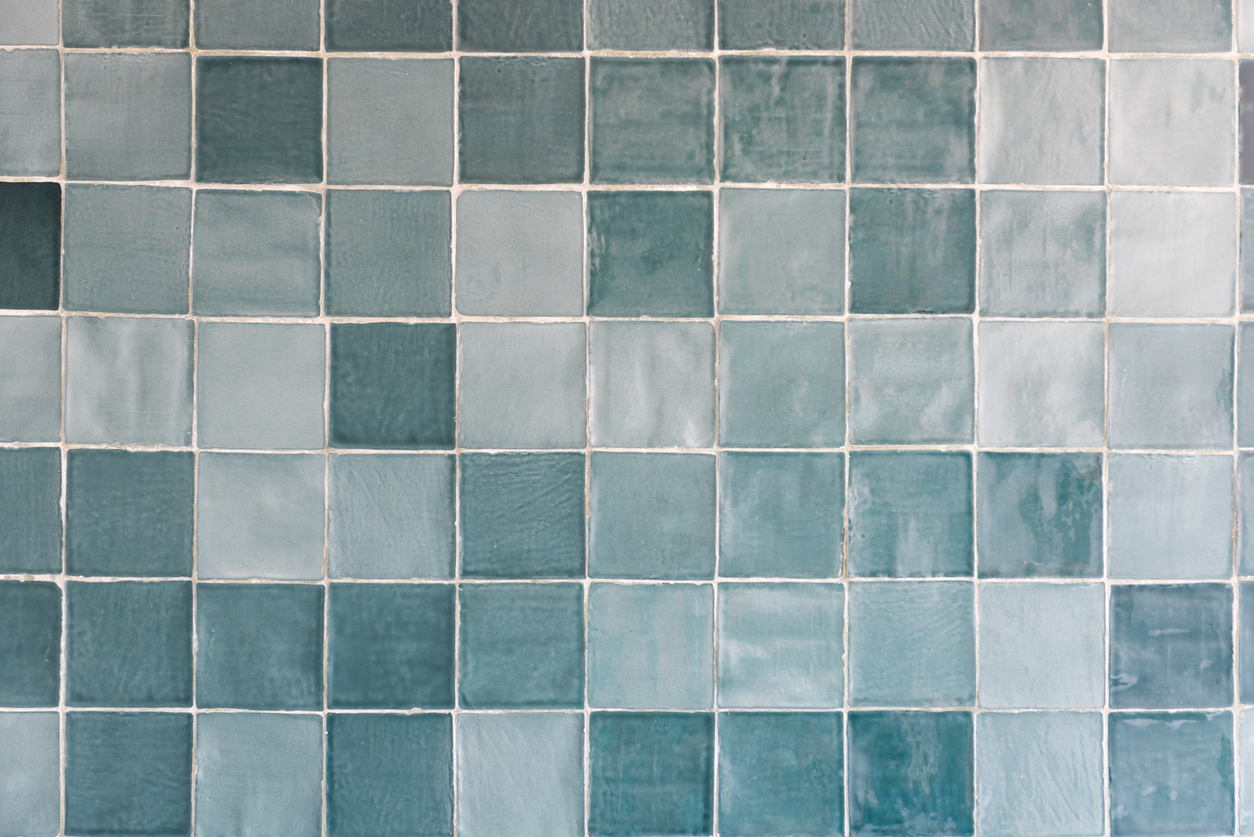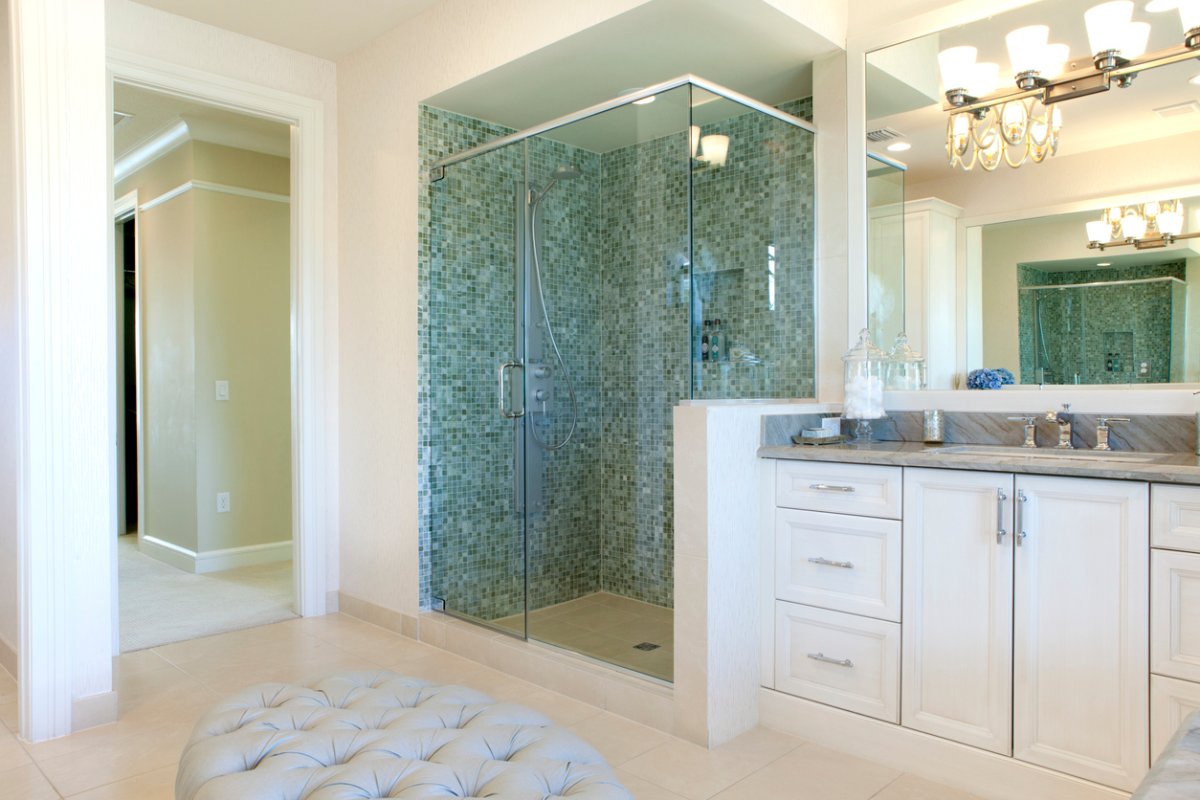We may earn revenue from the products available on this page and participate in affiliate programs. Learn More ›
Glass tile is gaining in popularity over ceramic tile as the surface of choice in home tiling projects. Although typically more expensive than other types of tile, glass adds a handcrafted, artistic quality that is easily worth the cost.
Unique Appearance
Glass tile comes in a variety of forms and colors, which depend on the process used to create them. Some tiles are cut and cold-cooled while others are melted, cast, and cooled. “In cold-manufacturing, there is no heat, just cutting of the glass,” says Grace Kalina of Boyce & Bean, a glass and clay manufacturing company in California. “On the other hand, cast glass involves mixing sands and chemicals and melting them in a tank, which is then dropped into trays for cooling.”
The end result can vary by color, thickness, size, and shape. Some glass tiles contain tiny bubbles within each tile, which create a “still wet” look and makes for individual tiles that, like snowflakes, are one-of-a-kind. The varieties of glass tile allow for endless customization options, and its versatility opens the door to indoor and outdoor projects alike.
Durability
Glass is not always associated with durability, but in truth glass tile can be just as strong and long lasting as ceramic tile. By nature, glass tile retains certain properties that make it more resilient than ceramic tile. “Glass tile is not porous,” Kalina says, “so it does not absorb moisture.” Moisture penetration is the enemy of any tile project since it can spell mold and mildew. There is no such worry with glass tile as long as it is properly installed.

Glass Tile Installation
Most tile installers will tell you there’s not much difference between installing ceramic tile and installing glass tile. “Installing glass tile is pretty straightforward,” says Thomas Hubbard, a tile installer in Burlington, Vermont. “Some installers get hung-up on the cutting of the glass, but in all it’s not that difficult to install.” Hubbard typically sees glass tile used as an accent, but it can be used for larger projects, including entire walls, or shower ceilings.
Like ceramic tile, installing glass tile involves setting the glass onto the work surface. Since glass tile is translucent, the thin-set is usually white so as to maintain a clear background that doesn’t affect the glass color. “With glass tile, which is see-through, the thin-set or subsurface must be perfect,” says Kalina. “If the tile is used in the bottom of a swimming pool, for example, the thin-set must be smoothed out or it will show.”

Grout for Long-Lasting Beauty
Grout will also impact the durability and look of the glass tile installation. Epoxy grouts are becoming popular for use with glass tile because of their longevity, strength, and relationship with the glass. Grouts like SpectraLOCK or Kerapoxy have a chemical composition that resists stains and breakdown. They are also non-porous and non-absorbent.
When mixed with antimicrobial products such as Microban, epoxy grouts also inhibit the growth of mold or mildew, a common occurrence with regular cement grout. “Cement-based grouts absorb moisture, so you have to seal the grout every two years,” Hubbard says.
Non-absorbent epoxy grouts require little maintenance, so while they may cost more than cement grout up front, they more than make up for it over time. The rubbery plastic-like characteristics of epoxy grouts make for a more challenging application, and a stronger finished product. “It takes a lot of elbow grease,” says Hubbard: “It also takes a lot of washing after. I’ll go over it several times with a light vinegar and water mix.”
Epoxy grouts come in a variety of colors, can be mixed with additives to adjust hue or create sparkles, and will not fade or change color over time. Set times for epoxy grouts are comparable to their cement counterparts. “I usually recommend staying off it for 24 hours,” Hubbard advises.

